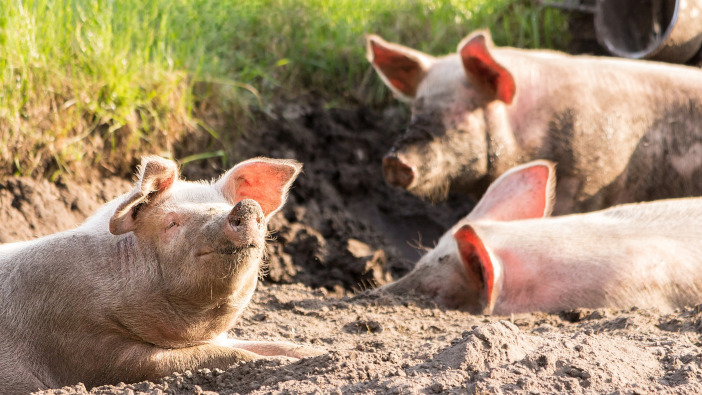With temperatures rising over the coming months, pig producers are being urged to consider ways to manage heat stress and the consequences it can have on feeding behaviour, growth rates and welfare.
Monogastric technical manager at Lallemand Animal Nutrition, Hannah Elliott, explained that heat stress can impact pigs of all ages and effects can been seen when temperatures are as low as 17-18 degrees. She said: “One of the most important impacts of heat stress is a change in feeding behaviour, which has a significant knock-on effect on performance and can cause severe health problems. However, by paying close attention to the pig’s nutrition and environment, heat stress can be effectively managed.”
The management of feed intakes can be helped by giving the pigs probiotic supplements in their diet, Ms Elliott said, and this helps the animals’ ability to adapt their eating behaviour to the heat stress conditions.
“We’ve found that when using the specific probiotic live yeast, Saccharomyces c. boulardii CNCM I-1079 (Levucell SB), normal feeding behaviour, feed intake and growth in fattening pigs can all be maintained during a significant heat stress period,” she said. “We also have positive field experience using the probiotic to ensure sow performance under heat stress, with improved piglet growth during lactation and at weaning.”
Timing of feeding is key, according to Ms Elliott: “It’s far better to feed sows during the cooler periods of the day as they will be likely to consume more. Smaller portions fed regularly throughout the day, can also help avoid a decrease in feed consumption and reduce feed spoilage.”
The pig’s environment can also be crucial in avoiding heat stress. Outdoor pigs need insulated arks or tents which are white in colour to reflect the heat, as well as adequate shade. She added: “Clean fresh drinking water is essential and mud wallows are a great way of keeping pigs cool, and will also provide a form of sunscreen.”
Controlled environments are easier to achieve for indoor herds, but ventilation must be reviewed. Ms Elliott said: “Adequate ventilation is crucial but systems must be kept in good working order. Automated systems will adjust air inlets and fans according to conditions but they must be well-maintained and checked regularly.
“Evaporative cooling/misting systems or sprinklers can also help. Again, make sure pigs have a constant supply of cool, clean water, maintaining adequate pressure during peak demand periods. Managing the environment of pigs, combined with diet supplementation in feed, will help ensure that you are one step ahead when sustained high temperatures come along,”




